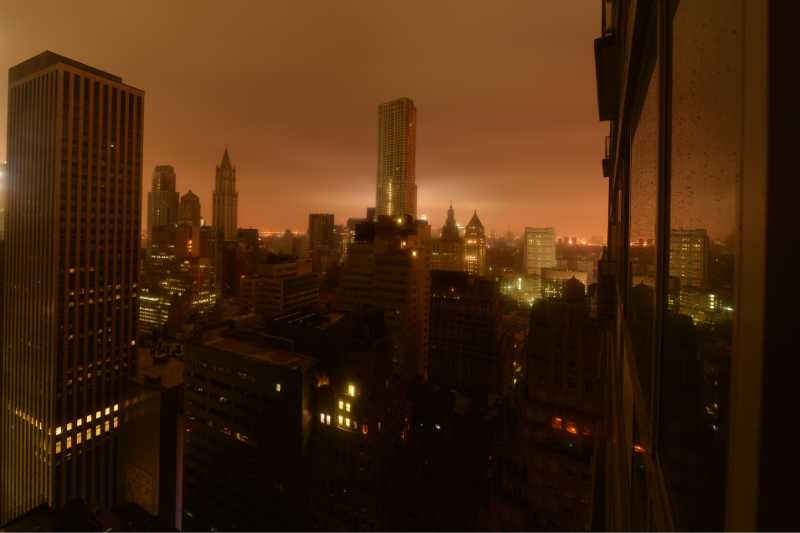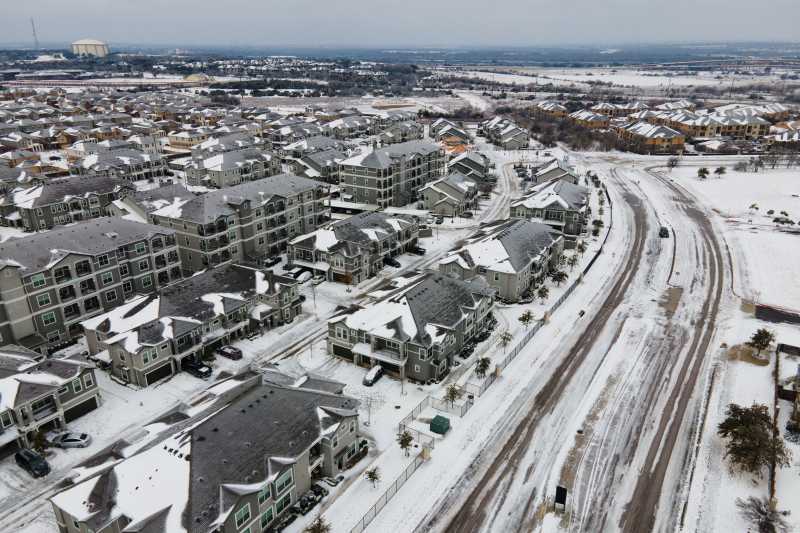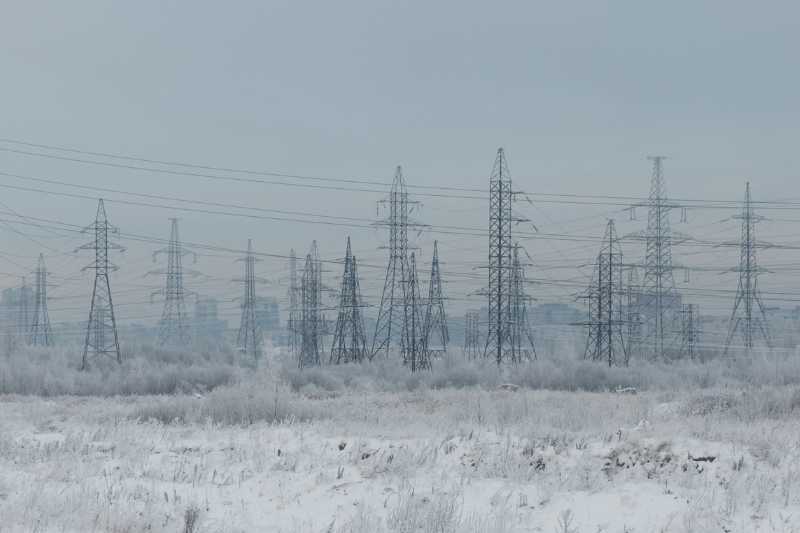Essential Steps to Prepare for a Blackout
Widespread power outages are more common than many people realize. Whether caused by storms, equipment failure, or grid strain - blackouts can happen anywhere and last for days or even weeks so it’s important to have a plan. A few simple preparations can help you protect your food, stay warm or cool, and keep essential devices running when the grid goes down.
An online power outage statistical report shows that during the last two decades, power outages affecting at least 50,000 customers per outage have happened in a majority of states. While some clearly struggle more than others, all states are vulnerable to long-term power outages that can wreak havoc for the unprepared.
Disaster Planning
A short-term power failure is considered any loss of power that lasts a few minutes to 48 hours.

On Average
How common is a short-term outage throughout the United States?
average outage: 8 hours
average outage: 7 hours
average outage: 5.5 hours
average outage: 11 hours
Causes
is the most common cause.
overloads the system's ability to produce.
often due to vehicle collisions or construction mishaps.
caused by lightning strikes.

Disaster Planning
A long-term power failure is considered any loss of power that lasts 48 hours and longer.

Recent Examples
Hurricane Helene caused widespread damage across the Southeast, leaving millions without power. At its peak, the storm knocked out electricity for nearly 6 million customers across 10 states, with over 1.2 million outages in South Carolina alone. While many households regained power within a few days, harder‑hit areas - especially rural and mountainous communities - faced extended outages lasting a week or more.
A severe winter storm caused the worst energy infrastructure failure in Texas history, affecting 4.5 million people. On February 16, more than four million customers were without power, and although many regained electricity within a few days, some households remained without power for over two weeks.
Causes
is the most common cause.
including hurricanes, earthquakes, wildfires, and mudslides. Note: wildfires have become a recurring reason for preemptive power shutoffs, especially on the west coast.
caused by antiquated power facilities or faulty wiring.
caused by both physical and cyberattacks.

Disaster Planning
Thankfully, long-term power outages are rare in the United States, but if you’ve ever experienced one, you know how critical advanced preparation can be. Below are the risks and consequences of being unprepared for a power outage, listed in order of urgency and impact.
Health Risks: Without power, people are vulnerable to extreme temperatures, which can lead to serious cold-related emergencies and heat-related illnesses and emergencies. Additionally, individuals who rely on electrically powered medical equipment, such as oxygen concentrators or dialysis machines, may face life-threatening situations.
Food Safety: Without refrigeration, perishable food can spoil quickly, increasing the risk of foodborne illnesses.
Sewage and Water Treatment Issues: Power outages can disrupt operations at water treatment plants and sewage systems, potentially leading to temporary service interruptions if backup systems fail. In some cases, this may result in a lack of clean water and sanitation issues, which could increase health risks from contaminated water or exposure to raw sewage.
Safety Risks in the Dark: Without lighting, there’s an increased risk of accidents such as falls, injuries, or fires caused by candles. This risk is particularly high for families with children, older adults, or individuals with limited mobility.
Difficulty Accessing Fuel: Gas stations rely on electricity to pump fuel. During a power outage, refueling vehicles or generators may become difficult or impossible, limiting transportation options and the use of backup power sources.
Economic Impact: Families may face unexpected expenses related to spoiled food, backup power, or alternative accommodation.
Mental and Emotional Stress: Extended outages can cause anxiety, frustration, and a sense of helplessness, especially for families with children or those living alone. A lack of information or updates on when power will be restored can exacerbate these feelings.
Disaster Planning
Food & Water
-
food:Learn how to build a food supply that will see you through a short or long term power outage.
-
water:Learn how to build a water supply that will see you through a short power outage. Be prepared for a more sustained power outage with long-term water storage.
-
water purification: During natural disasters, the city's water supply can become contaminated. Learn how to treat unsafe water should the health of the water be affected.
Alternative Fuel
-
devices & appliances:Learn about alternative fuels that will help power appliances and devices such as fuel generators, solar generators, power stations, and other charging options.
-
cooking, lighting, & warmth: Learn about other alternative fuel options that will help you cook hot meals, boil water, and provide light and warmth without electricity.
Alternative Equipment
cooking:Make hot meals for your family - learn more about alternative cooking methods.
lighting:You don't have to sit in the dark - learn more alternative lighting methods to light any room or outdoor area as little or as much as you'd like.
warmth:You don't have to be cold - learn more about alternative heating methods you can use to stay warm.
Freezer Care
Install a freezer alarm:Installing a freezer thermometer with a built-in alarm is one of the best ways to protect your food during a power outage. These alarms monitor the internal temperature and alert you when it rises above safe levels (typically 0°F or higher). Battery-operated models continue to function during outages, giving you an early warning before your food starts to thaw. While a thermometer can’t stop warming, it provides a critical early warning so you can take action, such as adding insulation or switching to backup power.
Keep freezer at least 70-80% full:If you don't have the food to do this, place jugs and baggies full of water in the freezer until it is. This way the freezer stays colder for longer in the event of a power outage.
Ensure backup power is ready:Select a backup power unit that matches your freezer’s wattage requirements. Keep it charged and ready to go as it may become essential for protecting your food supply.
Disaster Planning
Freezer Care During a Power Outage
Keep the freezer shut: This is the most effective passive strategy. Freezers are well-insulated and can stay cold for many hours if the door remains closed.
Add insulation materials:Adding insulation can make a big difference during a prolonged outage. Wrap your freezer with thick blankets, sleeping bags, moving pads, or reflective emergency blankets to slow the loss of cold air.
Use backup power:If the outage extends beyond 4–6 hours, especially when the freezer isn’t full or ambient temperatures are warm, backup power becomes critical. Learn more about backup power for your freezer.
Home Equipment & Devices
Unplug electrical equipment:Unplug electrical equipment and appliances to prevent damage from potential power surges when the power is restored.
Phone battery:To conserve battery power, switch the phone to a power-saving setting such as airplane or economy mode.
Test alternative devices & fuel sources:Take the time to access your choices for alternative equipment and devices. Learn what works and what doesn't so you can improve your plan for the next power outage. Are you missing anything? Keep a running list.
Check on Your Neighbors
Check on your neighbors: If it’s safe to do so, check on your neighbors. Your neighbor may not be as prepared as you are. See if you can help.
The elderly: A power outage can turn deadly if an unprepared person is caught in extreme temperatures in an extended power outage. This is especially true for the elderly or those with special needs.
Stay Informed
Use an emergency radio: Use a battery-powered or hand-crank radio to stay informed about the situation.
Follow local guidelines: Follow guidelines from local authorities and emergency services. They may provide instructions on where to find emergency shelters if necessary or provide other critical updates.
Disaster Planning
Once Power is Restored
- Check for damage inside and outside your home.
- Check for spoiled food in the refrigerator and freezer.
- Slowly reconnect equipment previously unplugged.
- Reset digital devices like clocks, timers, alarms, network routers, etc.
- Restock your emergency supplies as soon as possible.
- Look at the list of items you wished you had on hand: stock up on these items for the next outage.
- Review how well your emergency plan worked during the outage. Make updates or improvements based on what you learned.
- Check on your neighbors to make sure they are okay, especially if they are elderly or have special needs.
